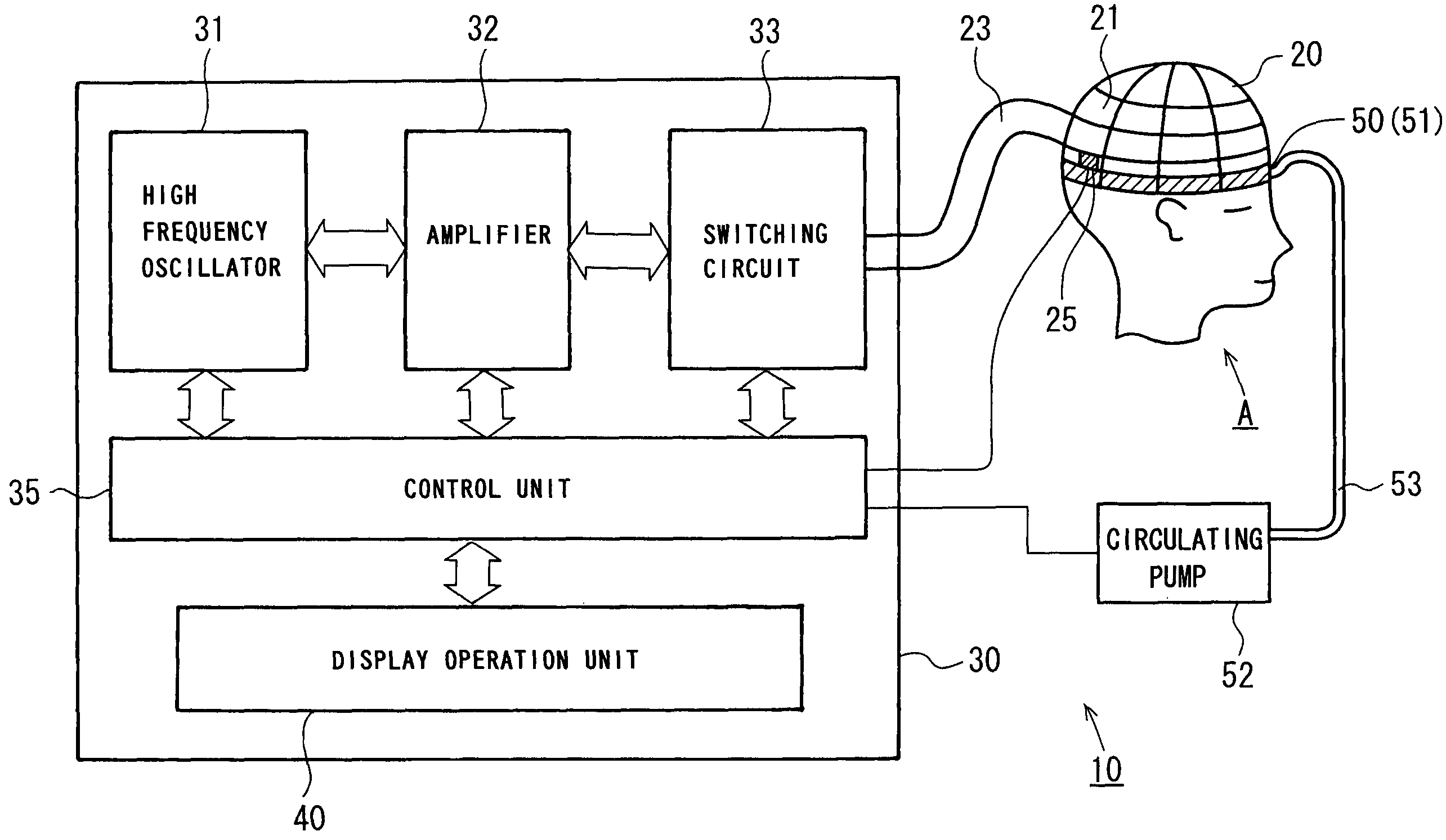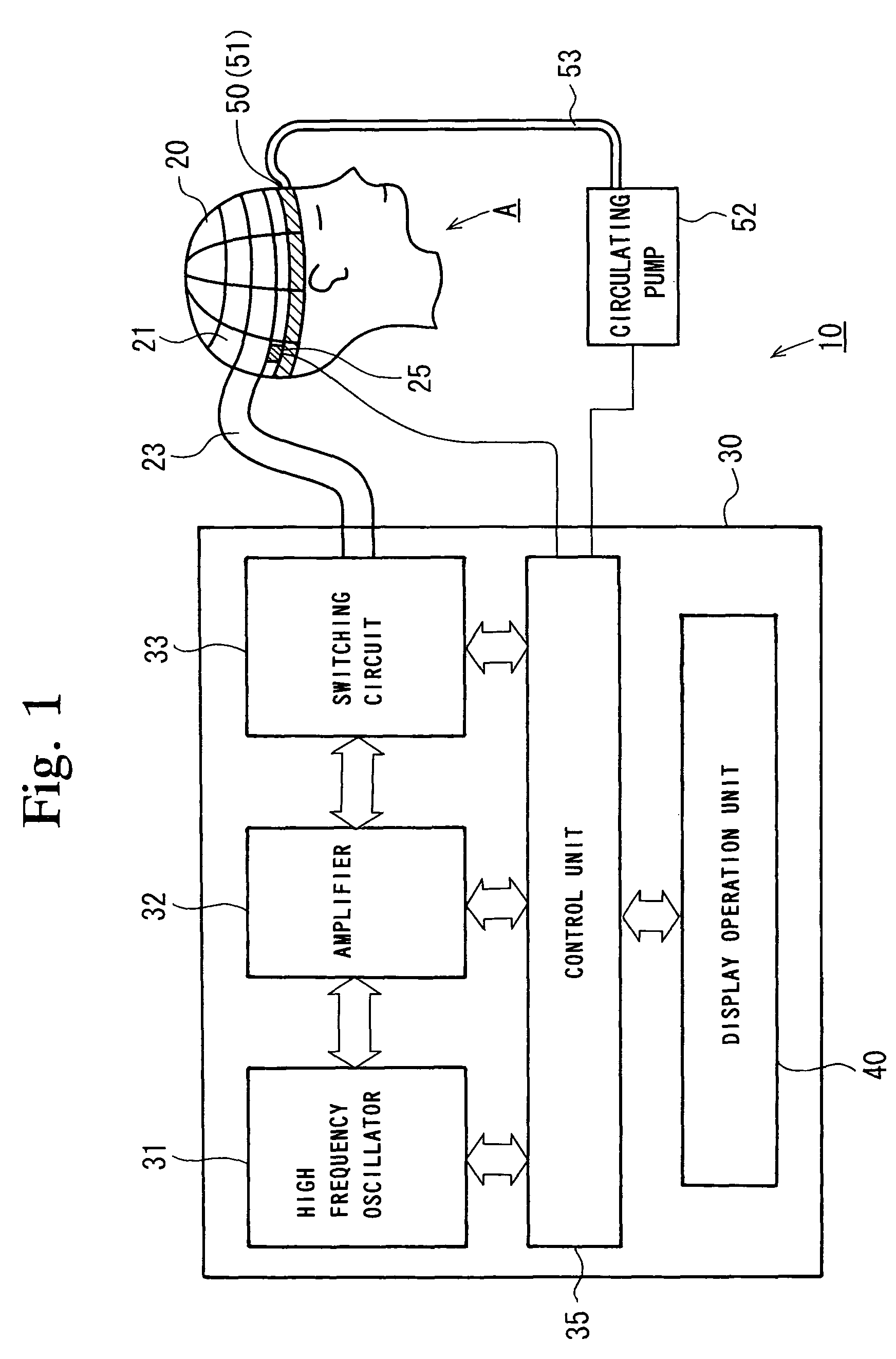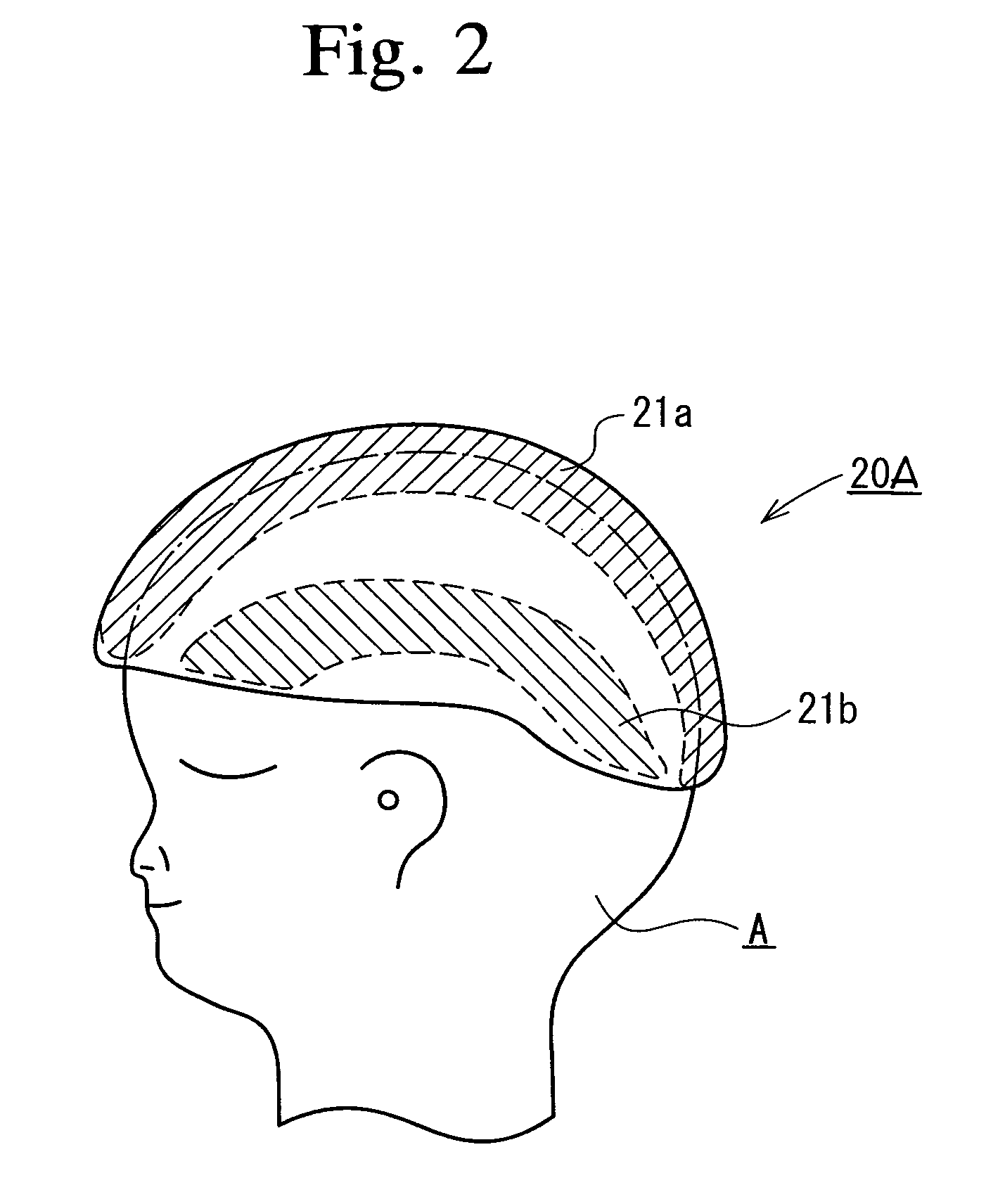Ultrasonic cerebral infarction therapeutic apparatus
a therapeutic apparatus and ultrasonic technology, applied in the field of ultrasonic cerebral infarction therapeutic apparatus, can solve the problems of high risk of promoting blood coagulation, low electroacoustic conversion efficiency of ultrasonic transducer attached to the point of a catheter, and limit the application of these methods to patients, so as to achieve no risk of causing a temperature rise in the brain tissu
- Summary
- Abstract
- Description
- Claims
- Application Information
AI Technical Summary
Benefits of technology
Problems solved by technology
Method used
Image
Examples
first embodiment
[0036]First, the ultrasonic probe cap 20A of the first embodiment will be explained. The ultrasonic probe cap 20A is a cap that is made up of a polyvinylidene fluoride (PVDF) film, as a row material, in the form capable of being brought into tight contact with the head and having flexibility. Although PVDF is a material that has an electromechanical transfer characteristic (piezoelectric characteristic), the efficient drive frequency is determined by the thickness of the film; therefore, in order to match the drive frequency with a comparatively low frequency being used in this embodiment, one that is made by laminating plural sheets of the films is desired.
[0037]However, in the case of a lamination of the films, it becomes difficult to bring it into tight contact with the head because of loss of the flexibility. Besides, it is necessary to configure the film so as to irradiate onto only the embolic site where thrombus occurred and so as not to irradiate the ultrasonic wave onto oth...
second embodiment
[0083]Next, the ultrasonic probe pad 20B that is the ultrasonic irradiation device 20 will be explained.
[0084]The ultrasonic probe pad 20B is a pad of the ultrasonic transducer having flexibility that is made up of a polyvinylidene fluoride (PVDF) film as a row material so that ultrasonic transducers can be attached to a part or the whole of the head of the patient under therapy A.
[0085]PVDF is a material having an electromechanical transfer characteristic (piezo-electric characteristic), and the thickness of its film determines an efficient drive frequency. Based on this fact, in order to match the ultrasonic probe pad 20B to a comparatively low frequency to be used, positive and negative electrodes are formed on the both sides of the PVDF film by means of vapor deposition etc. and necessary number of the films are laminated to constitute a pad of the ultrasonic transducer according to the drive frequency.
[0086]FIG. 10 is a diagram explaining the ultrasonic probe pad 20B of the sec...
PUM
 Login to View More
Login to View More Abstract
Description
Claims
Application Information
 Login to View More
Login to View More - R&D
- Intellectual Property
- Life Sciences
- Materials
- Tech Scout
- Unparalleled Data Quality
- Higher Quality Content
- 60% Fewer Hallucinations
Browse by: Latest US Patents, China's latest patents, Technical Efficacy Thesaurus, Application Domain, Technology Topic, Popular Technical Reports.
© 2025 PatSnap. All rights reserved.Legal|Privacy policy|Modern Slavery Act Transparency Statement|Sitemap|About US| Contact US: help@patsnap.com



